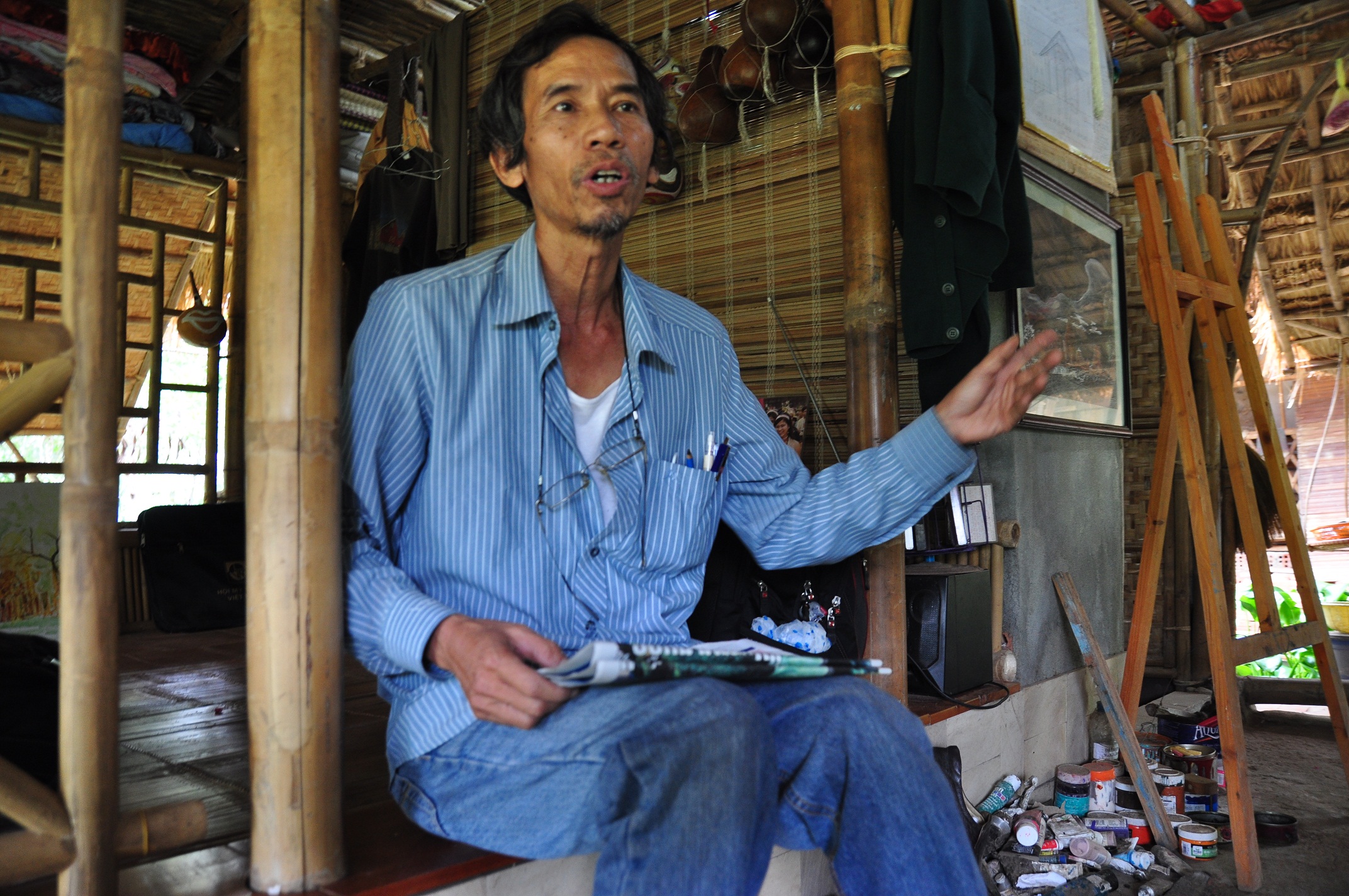A Vietnamese artist, who is the first in Vietnam to earn a Japanese award in architectural preservation earlier this month, has dedicated 35 years to the restoration and preservation of the Southeast Asian country’s significant architectures and relics.
Veteran artist Nguyen Thuong Hy is the only foreigner this year to win Japan’s Daifumi International Award at the awards ceremony in Japan on October 11.
The Daifumi International Award is presented annually by the Toyama International College of Crafts and Arts in collaboration with 120-year-old Kogakuin University in Tokyo.
It recognizes individuals’ and organizations’ merit in the preservation and restoration of wooden architectural works worldwide.
‘Eccentric’ artist
Hy suddenly quit his job as a former division chief at the Quang Nam Center for Relic and Tourist Attraction Management.
He sold his house in Quang Nam Province’s Tam Ky Town and built a traditionally-styled cottage in a draughty hill near UNESCO-recognized My Son Temple Complex in the same province’s Duy Xuyen District.
“Maybe my cottage is the only and last of its kind in the area. In recent years, the area has been dotted with modern-styled, air-conditioned houses, which offer the so-called homestay services to tourists. But such houses aren’t typical of the Vietnamese culture or architecture at all,” Hy observed. Several people thought he was quite eccentric when he sold his house in town and live alone in the cottage in the middle of nowhere.
The cottage, which boasts a solid clay roof, is a strong reminder of Cham ethnic people’s Thang Lam house type.
It has survived several storms, while many houses with metal roofs in the neighborhood were wrecked.
Many tourists, including foreigners insisted they be allowed to stay some nights in his home.
Some foreigners take great delight in walking barefoot on his earthen floor, which he said jokingly is remarkably absorbent.
Hy, however, refused to offer the homestay services, explaining that his small house, which also serves as his studio, is quite unkempt.
Invaluable preservation lessons
In 1995, Hy was sent to a six-month course in antique architecture preservation at Showa University.
He also received training from Fumio Tanaka, a Japanese master carpenter, whom the Daifumi International Award was named after.
“Restoring time-honored relics is just like caring for elderly people. We certainly can’t help them reclaim their youth, but our job is to take good care of them and extend their longevity,” Hy shared.
During his trip to Japan earlier this month, the artist was taken aback as a professor from Toyama University paid him a visit.
The professor also asked Hy to guide him to the houses on Ly Son Island off Hoang Sa Archipelago, which was described by Hy in a Tuoi Tre (Youth) article to be fire-proof to deter their Chinese invaders in the early 20th century.
Hy shared he was lucky to observe how Japanese carpenters are trying to preserve and restore the time-honored wooden houses which are eaten away by termites or the elements.
He also learned a lot from how much respect they pay to the original structures and traditional techniques.
The artist also marveled at the great lengths the Japanese engineers and carpenters go to to properly restore such age-old relics as Mizahara Temple in Karasuyama and long-standing houses and hospital in Okada and Sakura.
“In Japan, there’re villages which boast all cottages. Some even grow and sell reeds to villagers to erect their cottages. They drive luxury cars but live in cottages,” Hy noted.
He added that Vietnam’s central region has seen Japanese people’s participation in the construction and architectural preservation of its iconic structures.
The UNESCO-recognized Hoi An Old Town in Quang Nam Province is adorned with wooden structures including Cau (Bridge) Pagoda which were built by Japanese merchants as early as the 17th century.
The modern-time Vietnam has also seen massive contributions from several Japanese experts and professors in archeology and architecture including Yamagata Mariko, Nishimura Masanari- who dedicated 23 years and made notable contributions to Vietnamese archeology and died in a traffic accident in Vietnam in June last year, and Shieegda Yutaka.
Dedicated preservationist
Hy graduated from an art school in Hue in 1979 before settling in Quang Nam Province.
He has since visited a large number of old houses in the central region.
The artist also joined world-leading experts in the restoration of UNESCO- recognized My Son Temple Complex in the past 33 years.
He shared he was fortunate to work as an assistant to Polish architect Kazimierz Kwiatkowsky, who spent years studying and restoring the complex until his last breath.
After Kwiatkowsky passed away, Hy alone continued the incomplete, painstaking restoration work.
After his training course in Japan in 1995, the artist began roaming rural areas across Quang Nam Province, studying century-old houses and temples and preparing files to propose them for recognition.
“Whenever I learn of the discovery of a relic, particularly Cham temples, I will go there immediately, taking measurements and making draft drawings of them, which my son will later turn into graphic ones,” Hy added.
He now boasts a notable collection of drawings on ancient houses, temples and pagodas.
The artist is happy that his son, who is an architect, also shares his passion in ancient architecture.



















































